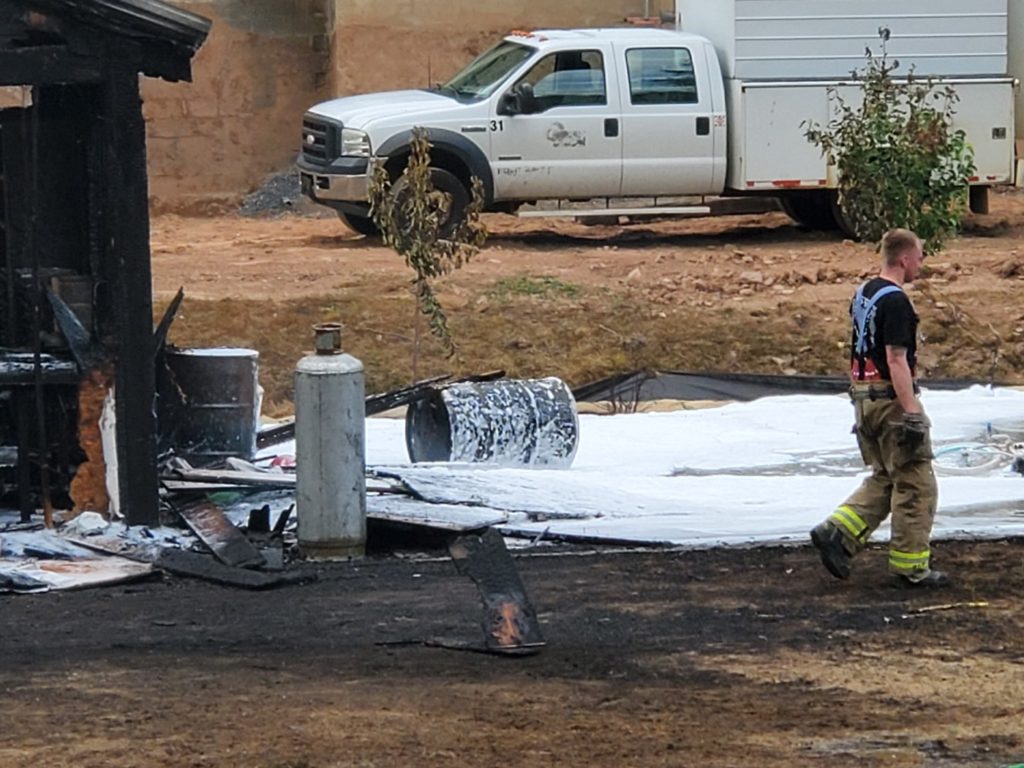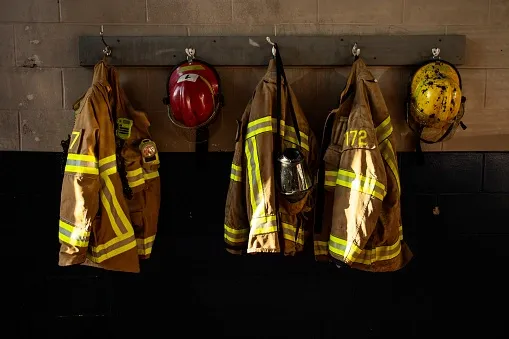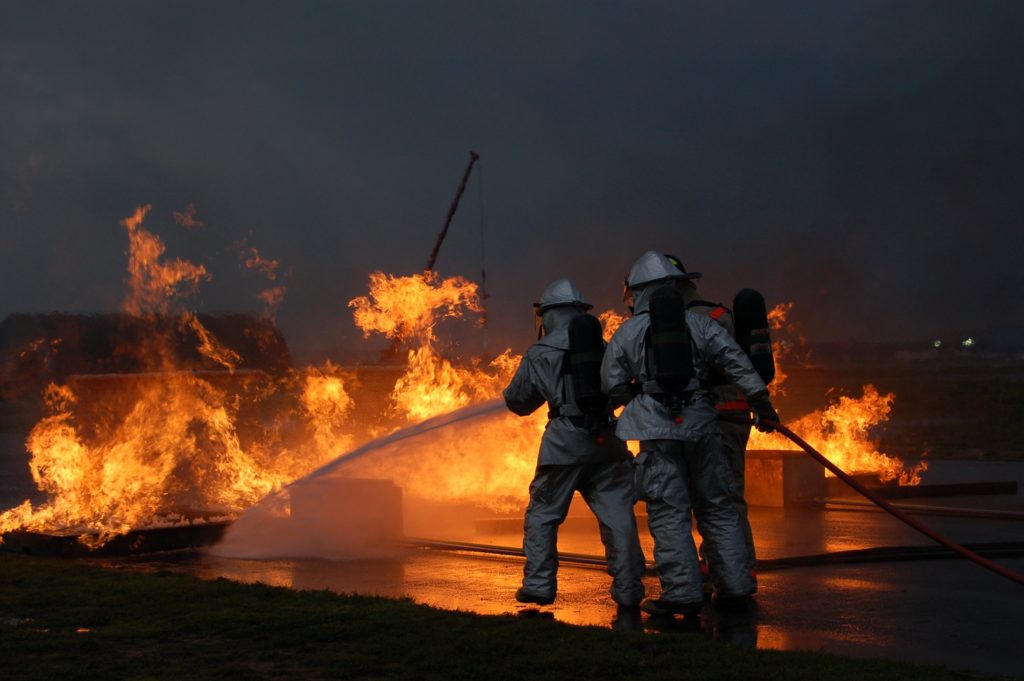Fire Department Services
Technical Advisory Support

AFSO21 offers independent technical advisory support regarding fire protection and emergency services involving the following:
- Training and Records Management
- National Incident Management System (NIMS)
- Emergency Vehicle Driver Training (EVDT) and Certification
- NFPA standards Adoption and Interpretation
- Firefighter Health and Safety
- Standard Operating Guidelines (SOG) and Policies (SOP)
- Municipal Ordinance / Resolution Support
PFAS Exposure Education & Management

AFSO21 offers experience with developing and maintaining a PFAS Exposure Management program designed to protect personnel from unnecessary exposure.
The role of firefighting is high-risk. Historically, the main cause of fatalities among firefighters is stress, however, occupational cancer is now the main cause.
Science can link products of combustion to cancer among firefighters. However, many firefighters are unaware of exposure to something just as dangerous if not more. Per- and polyfluoroalkyl substances (PFAS), a group of man-made chemicals is linked to various forms of cancer and medical illnesses. As a surfactant, PFAS exists in certain firefighting foams and firefighter turnout gear.
Approximately 110 million Americans have some level of PFAS in their bodies. Does your organization know what PFAS is? Does your organization use firefighting foam that may contain PFAS? What if anything is your organization doing to minimize or eliminate exposure to PFAS? Does your organization have policies in place regarding PFAS?
Volunteer Fire Service Analysis

Committing the necessary time and effort into properly organizing and managing a volunteer fire department is often difficult. As a result of too many tasks and not enough time, volunteer fire service organizations often overlook management requirements.
AFSO21 delivers a comprehensive capabilities assessment of fire protection and emergency services (FPES) for organizations and municipalities looking to improve efficient and effective delivery of services to their primary stakeholders, the community members they serve.
AFSO21 assists organizations with developing strategies to prepare the volunteer FPES organization for an Insurance Services Office (ISO) evaluation.
Incorporating the current edition of NFPA 1720, Standard for the Organization and Deployment of Fire Suppression Operations, Emergency Medical Operations, and Special Operations to the Public by Volunteer Fire Departments, along with a detailed Fire Emergency Services Assessment checklist, AFSO21 supports volunteer FPES organizations and local municipal leaders with the following:
- Governing Agency Responsibilities
- Master Planning
- Organizational Structure / Staffing
- Intercommunity Organization
- Maintenance Procedures
- Risk Management Plans
- Asset Control
- Professional Development
- Annual Reports
- Public Education
- Incident Management
- Safety/Risk/Health Management
- Fire/EMS Protocols
- Finance
- Records
Risk Management

The number one cause of Line of Duty Death (LODD) for fighters is Occupational Cancer. AFSO21 offers assistance with developing a program to reduce the risk of your firefighters from becoming a casualty and statistic.
Lowering or eliminating risk in emergency services is a necessity not only for the organization but the community it serves. AFSO21 is ready to assist your organization or municipality with fire department services that can reduce risk of catastrophic liability. While AFSO21 cannot provide legal advice, we are able to provide suggestions unique to your organization for implementation.
In addition, AFSO21 supports the Everyone Goes Home 16 Firefighter Life Safety Initiatives. Since 2004, these initiatives prove to be instrumental in saving the lives of countless firefighters. To learn more about Everyone Goes Home and the 16 Firefighter Life Safety Initiatives, click here.
Training Evaluation / Assessment

AFSO21 offers support maintaining an effective training program that enhances professional development while increasing service effectiveness within your community.
Training is critical towards the success of any organization; considered extremely important within fire service. Unfortunately, for many organizations, establishing and maintaining an effective training and education program is time-consuming and costly.
Several key questions you should be asking about the training and education program within your organization include:
- Does your organization have a dedicated training officer?
- Does your organization have an established training and education program?
- Are SOPs established for training and reviewed annually?
- Are your organization’s personnel certified by accredited agencies?
- Do your organization’s officers play a part in the training and education program?
- Are training records maintained?
If you answered NO to any of the above questions, AFSO21 is ready to help.
Staffing Analysis

AFSO21 offers staffing analysis to ensure general human resources administration practices are in place and are consistent with local, state/provisional, and federal statutory and regulatory requirements as well as industry standards.
AFSO21 supports with staffing analysis to attract, select, retain, and promote qualified staff in accordance with applicable local, state/provisional, and federal statutory and regulatory requirements as well as industry standards.
An AFSO21 staffing analysis supports with ensuring human resources development and utilization is consistent with your agency’s mission, goals, and objectives as well as being able to provide data on the utilization of your personnel.
Community Risk Assessment

AFSO21 offers unique fire department services such as Standard of Cover support to fire protection and emergency services with identifying the following:
- Unique characteristics of your community
- Effectively applying a methodology to perform an all-hazard risk assessment
- Determining and planning response strategies relative to your community’s unique hazards and risks Identifying where quality performance exists and challenges of quality of performance, in other words a Gap Analysis
- Establishing management plans for quality maintenance or improvement as needed
Identifying and assessing risks within your community is important so that emergency response organizations and personnel are able to develop efficient and effective strategies to prevent, protect, mitigate, respond, and recover to and from emergencies of varying scale and complexity.
Standards of Cover serve for the following purposes:
- Foundation for delineating and continually evaluating Key Performance Indicators (KPIs)
- Management tool for defining apparatus categories and personnel and training levels
- Analytical tool for aiding in establishing optimal resource utilization
- Assist local government officials in creating transparent operational levels and performance goals to which fire protection and emergency services providers expect to meet.